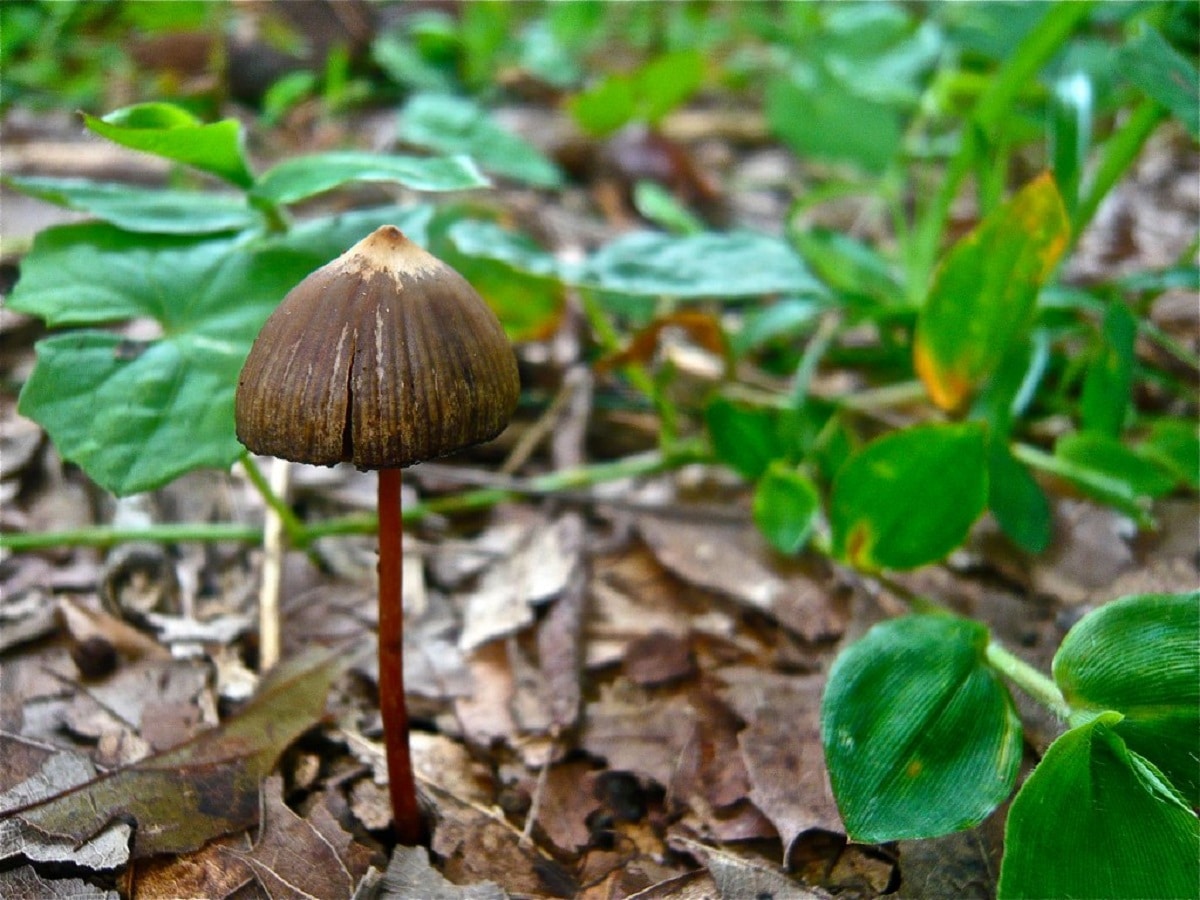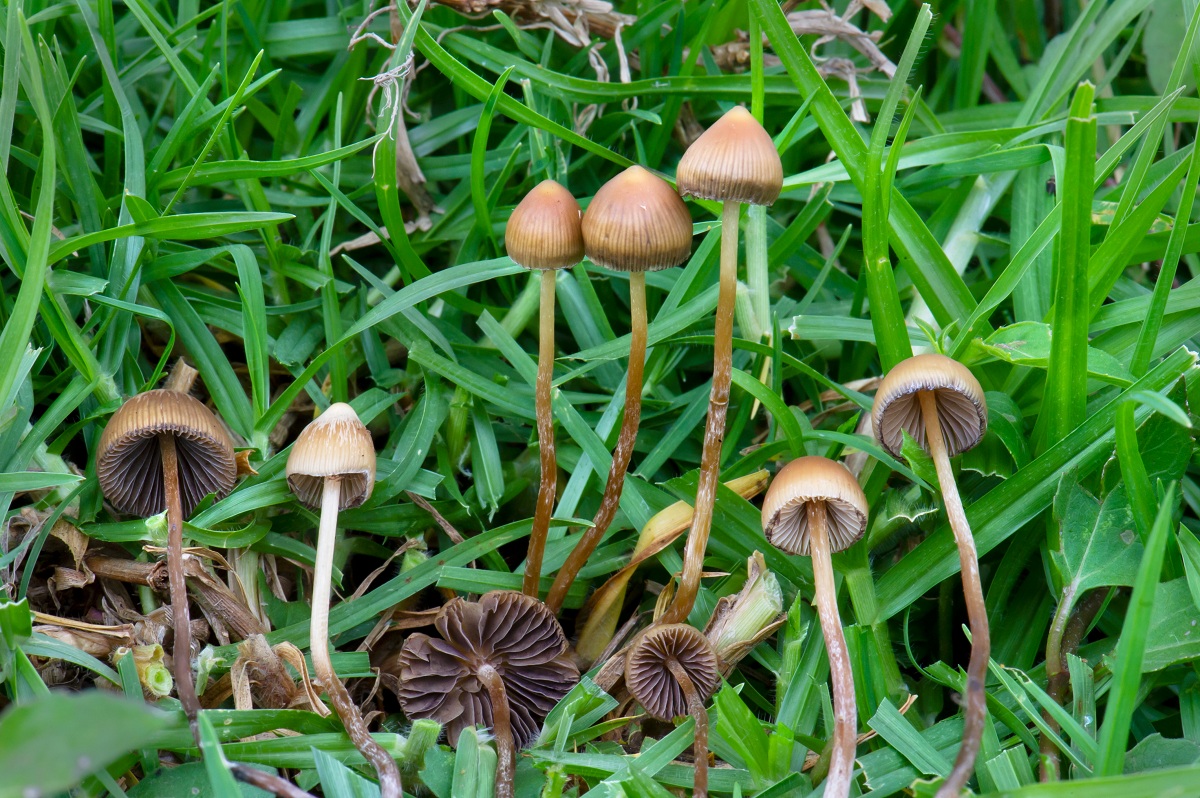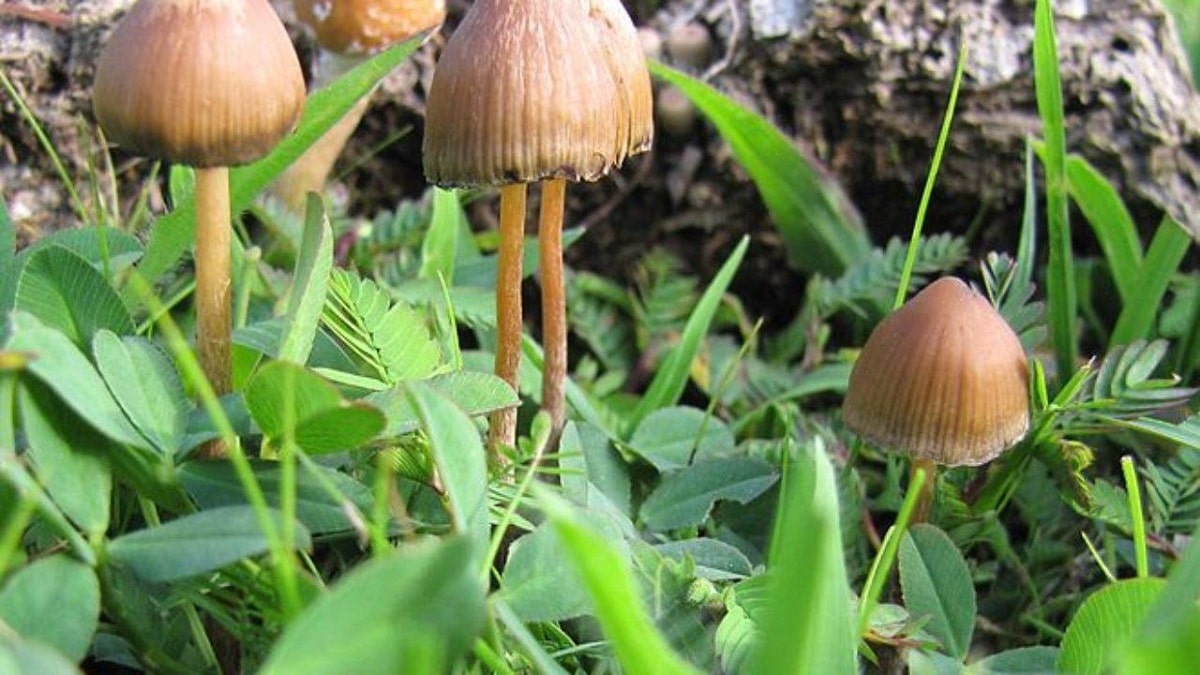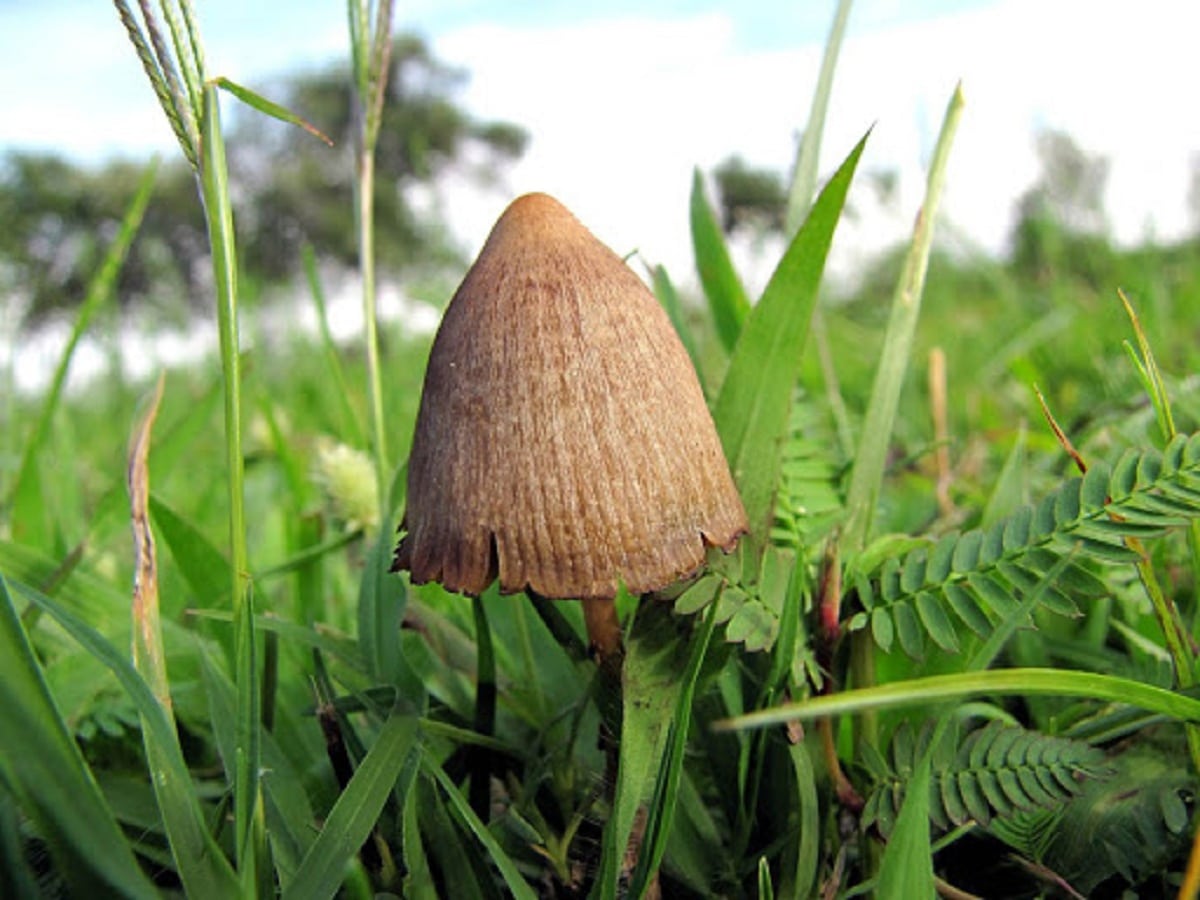
One of the most well-known hallucinogenic mushrooms in the world for its psychotropic effects is the Mexican Psilocybe. It is a species of psilocybin mushroom that belongs to the Strophariaceae family. It is a species of fungus endemic to the Mesoamerican region, so it cannot be found elsewhere in the world. Its special properties made it be used more than 2.000 years ago by pre-Hispanic cultures. Today many people use this mushroom for its hallucinogenic properties.
In this article we are going to explain all the characteristics, habitat and effects of the Mexican Psilocybe.
Key features

In ancient times, the Aztec peoples called this mushroom teonanácatl, a word derived from the Nahuatl teó (ti) = god, and nanácatl = mushroom or fungus. This expression translates as "mushroom of God." It is a fungus that has a structure in such a way that it grows directly from the ground. Its stem is delegated and it has a bell-shaped cup with a color tending to coffee.
The substances that all hallucinogenic mushrooms have and that make them have these effects they are the psychoactive substances called psilocybin and psilocin. El Mexican Psilocybe It has numerous cells inside the stem that can present a color ranging from ocher to dark purplish. Those who take it affirm that it has a somewhat acidic taste and gives off a strong pungent odor.
The active principle of these mushrooms determines 0.003% of all its content, which makes it about 0.3% drying material. In general, all the fungi that contain these active principles were developed in tropical and subtropical regions, taking advantage of soils with a high content of smoke and organic matter with a large amount of plant debris. At present, there are still some groups of tribes in the central region of Mexico that use this mushroom in their traditional rites.
Morphology
La Mexican Psilocybe has a conical or flared fruiting body and has a foot with a diameter of about 10-15 centimeters. The ocher or dark brown color varies in some specimens to gray and yellowish tones. Some of us can see blue and greenish spots.
The texture of the crown is somewhat viscous and moist, being slightly translucent and slightly striated with some grooves towards the margins. If we look inside the lamellae we can see that they are sinuous and adnate. Inside, they are purplish-brown in color and sometimes pale gray with whitish edges.
The stem is somewhat more uniform and is usually hollow. Its color is light beige to dark brown and with some yellow or red tones. When we manipulate it, something usually darkens. The smell of the fruiting body is similar to flour. It is usually established in small colonies or alone.
Distribution and habitat of Mexican Psilocybe

This fungus develops mainly in the subtropical regions of Mexico, Guatemala and Costa Rica. It is an endemic species to these places, so it is unique to there and we cannot find it naturally in another part of the world. They usually develop forming small groups or singly and growing in wet meadow habitats along roads. At other times we can find some specimens around forests.
They need a large amount of organic matter to be able to develop. They are often seen in pasture and fallow fields and just directly on manure. In some trees such as poplar or beech, they usually develop in small groups, taking advantage of the organic matter located in these places. Although less in proportion, they also grow in tropical deciduous forests or mountain mesophiles.
This mushroom adapts easily to both temperate and humid climates. They need an average annual rainfall of between 800-3000 millimeters and a variable temperature ranging from 15-23 degrees. It can be found in great abundance in cloud forests with high atmospheric humidity that are normally associated with other forest species such as Alnus, Clethra, Liquidambar, Nyssa, Quercus and Tilia.
Cultivation of Mexican Psilocybe

Since it is a saprophytic species that feeds on dead organic matter and the decomposition process is of great ecological importance to ecosystems. This is because it is able to degrade the topsoil and recycle nutrients from the soil. All this favors a good development of the soil and the species associated with it.
It is considered a species that colonizes areas near deciduous forests with a high content of plant matter. This means that it is a fungus with a high capacity to adapt to environments conducive to its development. The propagation of this species is restricted to the conservation of cloudy and temperate forests where it developed naturally.
And it is that the loss of ecosystems due to the impact of human beings could reduce wild populations and the conditions for their viability. In this way, the area of distribution is substantially reduced and would cause a regression in the populations of Psilocybe mexicana.
Currently so only 1% of the total surface of the humid forests of Mexico includes this mushroom. They are threatened by the increase in agricultural, forestry, livestock and agro-industrial operations. Therefore, its illegal cultivation is increasing.
Effects of Mexican Psilocybe
By having these active principles they usually have psychedelic, hallucinogenic or entheogenic effects. These effects depend on the dose and the person at all times. It can be a pleasant or a very unpleasant experience.
The first symptoms after consumption is euphoria accompanied by laughter and expressions of joy. Later, depending on the person's state of mind, a state of tranquility and calm is reached, achieving clarity and alertness. Depending on the dose, the sense of perception of time and space can be altered. You can see how the colors mix with each other and the lights increase their brightness. Some strange sounds can be perceived and the intensity of emotions can increase.
Symptoms They usually last between 4-6 hours and begin to take effect between 15-60 minutes.
I hope that with this information you can learn more about the Psilocybe mexicana mushroom.